Tags
"engineering"
NASA Ames Research Center: Evan Peairs, Winter Shadow 2016
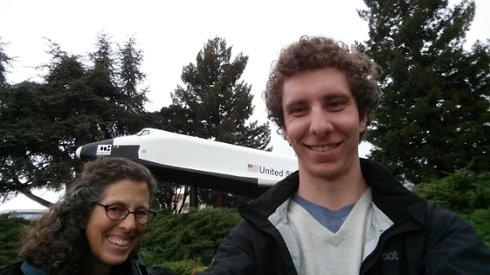
For two days last winter I had the wonderful opportunity to shadow Arwen Dave, a systems engineer at the NASA Ames research center. I was really excited to get to spend time at Ames - having grown up in the area, I'd often passed by their gigantic wind tunnel and wondered what awesome science was at work inside. NASA Ames is different from other NASA labs in that very little of their work is actual rocket science. A lot of their work involves designing, building, and operating the missions that the rockets actually deliver. Ames has a focus on robotics research, which is the field I'm currently trying to work my way into.
This opportunity came at a critical time in my search for career paths, as I had decided to put off grad school in order to try out future job paths before committing to one in particular. My main decision for which I was gathering information was whether continuing on in academia or shifting to an industry such as engineering would put me on a better career path. Ames was the perfect place to learn about future jobs, as there is a healthy mix of scientists and engineers working in close collaboration.
My time at NASA was split between following Arwen around on her job, taking tours of some of the labs, and wandering around talking to people about their jobs. I finally got to see the inside of a wind tunnel, and got to geek out with the local machinist over their awesome equipment. Following Arwen was very informative in that, for the first time, I got to see what it is that systems engineers do with their time. It turns out that the majority of the work consists of collaborating with lots of different kinds of people to try and get a project designed and built. Working at NASA in particular seems to make the job harder, since there's tons of added bureaucracy to deal with, but also a whole lot more rewarding, since you get to see your creations put into space. Arwen tends to be working on a number of different projects at once, and had a few tips for me on how to seek out and create new work opportunities within an existing position.
Continue reading NASA Ames Research Center: Evan Peairs, Winter Shadow 2016
Jama Software: Isabella Jorissen, Winter Shadow 2016
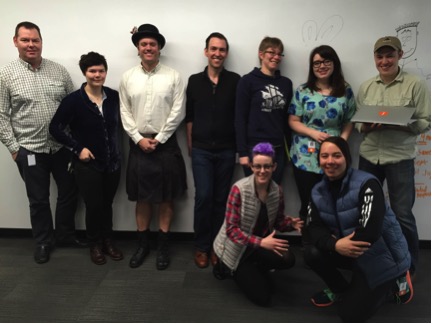
Me, 2nd from the left, with my host Chris McCraw, on my right, and the Support Ops team
Mustering up the will to get out of bed at 7 am on a rainy Monday in Portland is a lot easier if you have something to look forward to. I realize that 7 am isn’t early for some, but after two weeks of loafing around with my family, it was a bit of a rude awakening (pardon the pun). Each morning that week, the 99 bus shuffled me to the 6th and Yamhill, and from there I’d walk a few Portland-sized blocks to 2nd and Taylor.
At the corner of 2nd and Taylor is– you guessed it– Jama’s headquarters. The building owner has a penchant for old motorcycles, so the first-floor lobby sports four beautiful bikes (three Ducatis and a Norton, if memory serves). The second-floor lobby is no less eclectic, though that’s Jama’s doing. Anyone who visits the Jama office signs in with a living wall at their back and an inspirational mission statement on the wall to their right. A few of my favorite bits: “This is where we do our best work. It’s where we ask the tough questions and challenge the status quo… As an employee, partner, customer, or guest within our space, you are a member of Jama Nation… Let’s get to work.”
Jama Software focuses on one product, known as Jama. “Jama,” as it was put me by my externship host, “is a little bit of a Swiss army knife.” It’s often used by companies who have a lot of specifications, procedural oversight, or regulations to meet during the product development process. My externship host was Chris McCraw, team Lead for Support Ops. The Support Ops team, which served as a home base of sorts for me, manages any technical issues that might pop up on the customer side. They also maintain online a community where users can ask questions, read documentation, and learn how to make Jama work for them.
Continue reading Jama Software: Isabella Jorissen, Winter Shadow 2016
Sigenics, Reed Winter Externship Program, Debra Moda Raduma
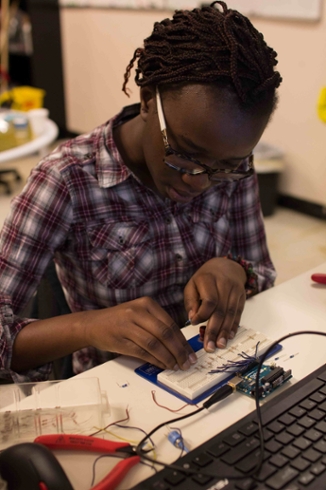
Debra Moda Raduma, sophomore math major, participated in a winter externship in Southern California working with Reed parent Dr. Douglas Kerns at Sigenics, a circuit design and production company
Over winter break, I was fortunate enough to get to visit Southern California where I spent a few days, enjoying the good weather and scenery. I fell in love with Orange County right from the moment I landed at John Wayne Airport. I was so scared and excited at the same time but I had two other externs, Edgar ’17 and Farhan ’18, to share in my worries, as none of us knew what to expect. We were going to work at Sigenics, a company that specializes in the designing of microchips. It has two branches, one in Chicago and another in Sierra Madre, where we were scheduled to work.
The first day in the lab we were greeted by the photo of the famous mathematical physicist James Clerk Maxwell, whose frame hung steadily on one of the walls of the lab. I was already impressed from the word “go”. I was able to learn and understand how analogue and digital systems intersect. We worked on semi-projects, where we used breadboards to build circuits, and an arduino (I didn’t know what this was either!
Continue reading Sigenics, Reed Winter Externship Program, Debra Moda Raduma
Insights at Sigenics, Winter Externship, Edgar Perez
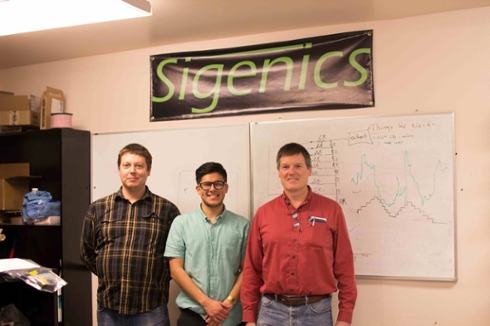
This winter, two fellow Reedies and I had an amazing experience working with Dr. Doulas Kerns and Mr. Marcus Snyder at Sigenics. Together, they provided an empowering three day externship and enlightening insights as to the life of electrical engineers. We started our trip with an hour long commute from the California coast to the base of Mt. San Antonio. Relieved from traffic by the carpool lane and good music, our trip to Sigenics was always pleasurable.
We spent our first day learning about the company and the different roles of scientists and engineers. Dr. Kerns started off with a small tour of their lab and showed us some of their designs. He really blew us away when he showed us the incredibly small size of their circuit designs and their circuit elements. A chip no bigger than 1 squared millimeter can house billions of transistors. As if hearing about this wasn’t enough, Dr. Kerns pulled out a sample of their work and placed it under and a powerful microscope. There is was. Mind-numbing in scale and constructed with jaw-dropping precision. Millions of components carefully embedded in a tiny silicon chip, and the chip: even more precisely designed. Yet here we were, three unexperienced undergrads sharing a room with the chip designers themselves!
The relationship between an engineer and a scientist was the next item on Dr. Kern’s agenda. Using a very Reed-esque analogy of a pizza shop, he demystified some of the quirks of engineering. The relationship between engineers and scientists is actually more symbiotic in nature than one would expect, he explained. Engineers use scientific results to develop tools for scientists. In turn, scientists use the tools to develop new results. This is relationship is a vertical growth pattern where the two fields help propel one another. Along the way, the tools and results produced by both parties will spread horizontally, manifesting themselves as new technologies or constructions for the benefit of our societies. We ended the day with a scientific investigation of the phenomena occurring “behind the scenes” in the electrical components we used the following day, and (appropriately) some delicious pizza from a local shop.
Continue reading Insights at Sigenics, Winter Externship, Edgar Perez
Sigenics Winter Externship, Farhanul Hasan
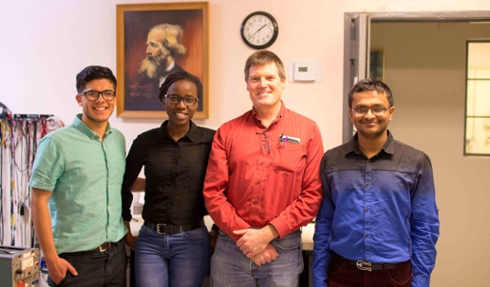
On the 11th of January, 2015, I landed in the Los Angeles international airport for a work experience opportunity that I had been looking forward to ever since my application was accepted. I was picked up by Edgar, who was also doing the externship, and Jackie (Edgar’s sister), whose generosity allowed us accommodations for the duration of the program. Jackie drove us to her house in Costa Mesa and Modi, another of the externs, came in later in the evening. We went out to grab dinner and buy groceries for the next few days.
Day 1: Jan 12
We woke up at around 6:30 and hit the road at 8:15. The traffic wasn’t nearly as bad as we expected and as a result, we reached Sierra Madre by 9:15. At the Halcyon building (which housed the Sigenics Lab), we were greeted by our sponsor, Dr. Douglas Kerns. We went inside the Sigenics lab and met Marcus Snyder, the office manager and senior technician. Douglas gave us a brief overview of the company and its goals. We learned that Sigenics specializes in designing integrated circuits (IC) and silicon wafers among their microelectronic components. Douglas also explained the science behind electronics and electric circuits. After learning these introductory ideas, we looked at a silicon wafer chip through an electron microscope, which was very exciting as we could actually see the arrangement of electrons that serve as the building blocks for all of electronics.
Continue reading Sigenics Winter Externship, Farhanul Hasan
Technical Documentation Sigenics, Inc.
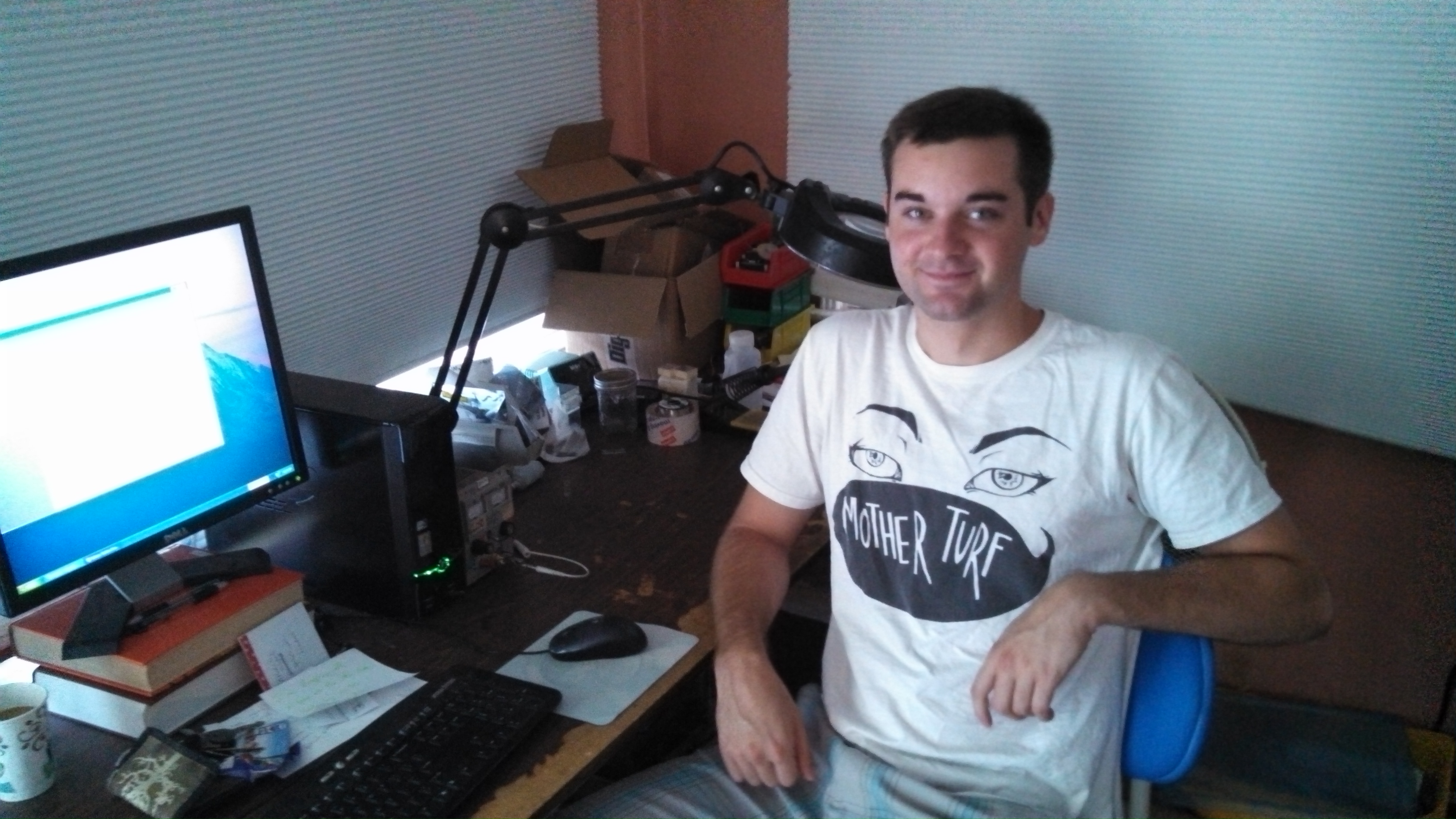
Aaron at work at Sigenics
Greetings from Sierra Madre, California, where I am currently interning at Sigenics Inc., a company excelling in the creation of custom silicon devices. When I first read the name ‘Sigenics Inc.’, I pretty much expected to find myself working amongst bustling lab-coated technicians scurrying around a clinically clean facility maintained by Wall-E-esqe robots... As it turns out, the Sierra Madre branch of Sigenics Inc. is more low-key—including me, it's a 3 man operation here, stationed in the guest house of my boss, the venerable Douglas Kerns. As far as bosses go, he’s awesome, the atmosphere is always relaxed, perhaps a side effect of working in this beautiful Los Angeles suburb. Doug tells me the Sierra Madre branch formed because he didn’t want to move out to Chicago—where the main facility of Sigenics is located—because the weather in SoCal was too nice to leave. Amen. Even after spending nearly every summer of my life here, I still don’t tire of it. Not long ago a Reed friend asked me, “Aaron, how come you never stay in Portland for summer? It gets so nice.”
“Well,” I replied, “it’s like that in L.A., too, we just call it ‘normal.’”
Continue reading Technical Documentation Sigenics, Inc.
